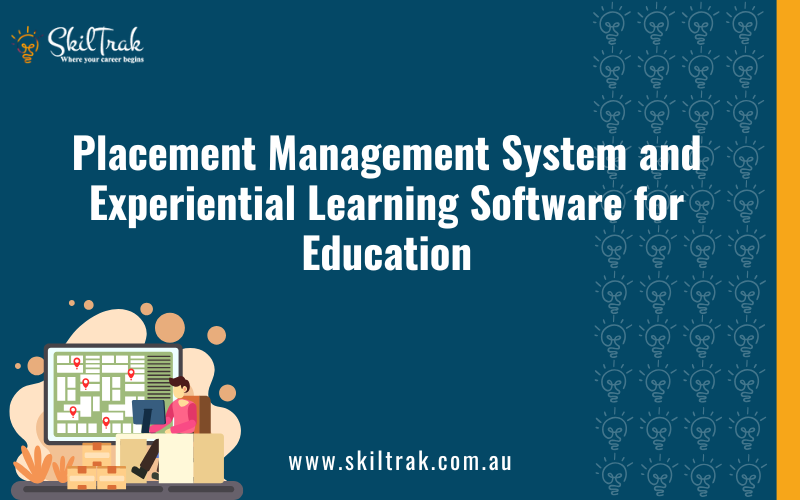
Placement management systems and experiential learning software coordinate the logistics, assessment, and outcomes of student internships, clinical rotations, co-ops, and fieldwork to improve efficiency and employment outcomes. This article explains how it functions as a placement management system and experiential learning platform, outlining the mechanisms for application intake, matching, scheduling, compliance, and outcome reporting, while highlighting the benefits for stakeholders across students, employers, and institutions. Readers will learn core features, real-time tracking methods, integration patterns with LMS and SIS, implementation steps, and the reporting and analytics capabilities that support accreditation and program improvement. Many institutions struggle with fragmented workflows, manual scheduling, and incomplete evidence for accreditors. This article addresses these pain points by centralising placement data and automating repetitive tasks to free staff time and increase placement visibility. The following sections cover a definition and feature-to-benefit mapping, experiential program workflows, stakeholder benefits, a step-by-step implementation playbook, reporting and security details, program-specific use cases and ROI examples, and common questions procurement teams ask when evaluating placement tracking solutions.
What Is Placement Management System Software and Why Is It Essential for Educational Institutions?
A placement management system is software that centralises placement workflows, matches students to opportunities, automates scheduling and documentation, and provides audit-ready reporting for accreditation and compliance. By centralising student profiles, employer records, and placement schedules, the system reduces administrative overhead and creates an auditable trail of activities and outcomes that support program improvement. Institutions gain operational efficiency, better employer relationships, and clearer evidence for accreditors; these outcomes make placement management software essential for colleges, universities, and vocational providers like SkilTrak.
The next subsection explains how automation shortens the placement lifecycle and reduces manual steps for staff and students.
How Does Placement Tracking Software Streamline Student Placement Processes?
Placement tracking software streamlines the student placement lifecycle by automating application intake, candidate matching, scheduling, communications, and final assessments in a single record for each placement. Automation of repetitive tasks such as notifications, document collection, and interview scheduling reduces administrative steps while ensuring consistent communication and timelines for students and employers. Centralised communication threads and document management keep all stakeholders aligned, and timestamped status changes create an audit trail for each placement that simplifies review and accreditation requests. Understanding these workflow efficiencies leads directly to the core feature set that enables them.
Automating Student Internship Placement and Reporting Systems
The organisation of student industrial internships during the educational process is a key element in specialist training, with the IT field requiring a particularly tailored approach. Typically, universities collaborate with partner companies to create joint solutions, which involve providing material and educational resources, selecting qualified personnel, and exchanging experience. Despite the established collaboration between universities and their partners, numerous inconveniences and unresolved coordination issues arise during industrial internships. These include determining placement for students, inter-party agreement, meeting requirements, defining coordination criteria, processing necessary documents, reporting, and the most significant problem: the absence of a unified digital automated space. This forces all routine work to be done manually and to go through numerous administrative stages and approvals across various authorities. This work aims to research and develop an innovative system.
What Are the Core Features of Placement Management Systems in Education?
Placement systems combine several core modules: student profile management, employer databases, matching engines, scheduling, assessment tools, and reporting dashboards to cover the full placement lifecycle. Student profiles capture contact information, competencies, eligibility checks, and e-portfolio artifacts, while employer records hold opportunity descriptions, site capacity, and preceptor details. Scheduling modules manage interview slots and placement calendars and allow manual overrides where needed, and assessment tools collect supervisor feedback and competency attainment evidence for final evaluations. To illustrate feature-to-benefit mapping, the table below summarises representative features and their purpose and stakeholder benefits.
How Does This Article Support Compliance and Accreditation Reporting?
This article supports compliance by capturing structured evidence, providing preconfigured and customisable report templates, and maintaining secure audit trails that record timestamped actions and document versions. The platform maps placement activities to accreditation standards and automates exportable evidence bundles that include student logs, supervisor assessments, and credential verifications. Real-time dashboards let program leaders monitor outcome metrics required by accreditors, and filters allow drill-down to cohorts, semesters, or site-level records for site visits. These compliance features directly inform how experiential learning programs collect and present evidence, which the next major section explores for internships and clinical placements.
What Types of Experiential Learning Programs Can Be Managed with This Software?
The platform handles a broad range of experiential programs, including internships, clinical rotations, co-op placements, practicums, volunteering, fieldwork, and vocational training placements with configurable workflows per program type. Clinical rotations require credential and clearance checks, preceptor assignments, and site capacity management, while co-op programs often need employer agreements, payroll coordination, and multi-term scheduling. Templates and role-based workflows let administrators tailor the process, such as background check gates for clinical sites or wage tracking for co-op placements, so program-specific compliance and operational needs are enforced automatically. These program adaptations lead naturally to the mechanisms that enable real-time tracking of student work experience.
How Does the Software Facilitate Real-Time Tracking of Student Work Experience?
Real-time tracking is achieved through mobile time-logging, supervisor sign-off workflows, milestone tracking, and automatic reminders that keep placements progressing and evidence current. Students can submit activity entries and attach photos or documents to their e-portfolio, supervisors can verify entries with timestamped approvals, and placement officers receive alerts for missing verifications or overdue assessments. Offline-capable mobile apps capture fieldwork even without connectivity, synchronising when online to preserve continuity of records. These operational capabilities enable coordinated clinical and co-op scheduling, as described next.
How Are Clinical Placement and Co-op Programs Coordinated Effectively?
Effective coordination relies on site capacity dashboards, preceptor assignment rules, automated compliance checks, and flexible scheduling logic that balances student preferences with site availability. Administrators monitor site capacity and match students using rules-based matching with manual override options when exceptions arise, while pre-placement gates verify credentials, immunisations, and background checks before placement confirmation. Best practices include tiered matching (auto-match → review queue → confirmation), clear escalation paths for site issues, and scheduled check-ins to catch problems early. These coordination tactics reduce placement delays and ensure compliance is validated before students arrive on site.
What Benefits Does a Career Services Platform Provide to Students, Employers, and Educational Institutions?

A career services platform centralises employer engagement, candidate pipelines, interview scheduling, and outcome tracking to support stakeholders across the placement lifecycle and improve employability metrics. Students gain visibility into opportunities, tailored matching, and readiness tools; employers receive streamlined posting and candidate management; institutions acquire outcome data for accreditation and continuous improvement programs. The following lists summarise stakeholder-specific benefits and then explain employer engagement features that enable sustained partnerships.
- Students: Improved discovery of relevant placements, competency-aligned matching, and tools for interview and offer tracking.
- Employers: Simplified job posting, screening workflows, and scheduling integrated with campus events.
- Institutions: Aggregated outcomes and dashboards for accreditation, reduced administrative time, and improved employer relationship metrics.
This stakeholder breakdown clarifies how career platforms create value and leads into employer relationship management capabilities.
How Does Career Services Automation Enhance Employer Relationship Management?
Career services automation enhances employer relationship management by providing CRM-like features: centralised employer records, activity histories, outreach templates, and events management that track interactions over time. Automated outreach sequences and relationship scoring highlight high-value partners and identify employers needing re-engagement, while integrated event and interview scheduling syncs campus calendars with employer availability. Reporting on employer pipeline health and engagement metrics helps relationship teams prioritise outreach and quantify partnership ROI. These employer features support student readiness tools that improve placement outcomes.
In What Ways Does the Software Improve Student Career Readiness and Outcomes?
The software improves career readiness by combining competency mapping, targeted learning plans, mock interview modules, and employer feedback loops to close gaps between student skills and market requirements. Skills assessments identify competency deficits and recommend preparation resources or on-campus programming; employer feedback is captured systematically to refine curricula and coaching. Tracking interview-to-offer and placement success rates provides measurable outcomes that career services can act on to boost placement rates. These readiness mechanisms underpin stronger stakeholder connections, which the next subsection describes.
How Does This Article Foster Stronger Connections Between Stakeholders?
This article fosters connections through dedicated portals for students, employers, and faculty, shared dashboards that surface mutual expectations, and automated notifications that keep all parties aligned around key milestones. Shared e-portfolio evidence and supervisor feedback create transparent records that employers and faculty can review, while scheduled touchpoints and milestone alerts maintain engagement throughout the placement lifecycle. These shared communication flows reduce friction, strengthen employer pipelines, and improve the student experience by maintaining consistent, documented touchpoints that support successful completion.
How Can Educational Institutions Implement This Article for Optimal Placement and Career Services?
Implementing this article successfully requires discovery, integration planning, a pilot phase, role-based training, and a feedback loop tied to measurable success metrics. A staged rollout minimises disruption: begin with stakeholder mapping and needs assessment, configure templates and rules for priority programs, run a pilot with a representative cohort, iterate based on feedback, and expand to full deployment with monitoring. Integration with existing LMS and SIS systems, plus a clear training and support plan, ensures data consistency and user adoption. The following numbered steps spell out a recommended implementation path.
- Conduct stakeholder discovery: Map roles, workflows, and accreditation requirements to define scope and success criteria.
- Plan integrations and data mapping: Identify LMS/SIS endpoints, data fields, and authentication approaches for synchronisation.
- Run a pilot and iterate: Deploy with a representative program, collect feedback, refine configurations, and measure pilot success.
What Are the Key Steps for Successful Software Adoption and Integration?
Successful adoption follows a sequence of needs analysis, configuration, pilot testing, training, rollout, and continuous improvement with defined success metrics and reporting cadence. Assign clear role responsibilities who configure templates, manage employer onboarding, and own reporting and document timelines for each phase. Measure adoption with metrics such as per cent of placements processed through the platform, time-to-placement, and user satisfaction surveys, then iterate on workflows as needed. Defining these steps and metrics upfront creates accountability and supports a smoother institutional change process.
